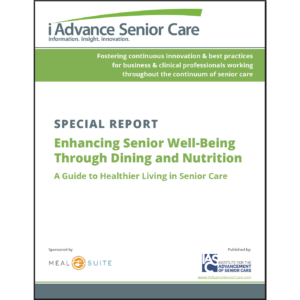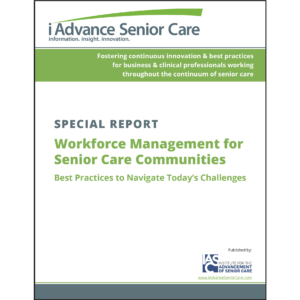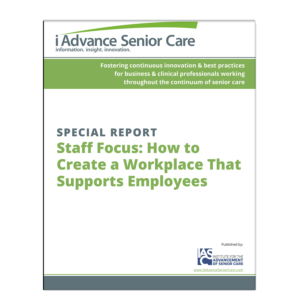Improving Health Benefits for Staff
| IMPROVING HEALTH BENEFITS FOR STAFF A new report points up Among executives and employees alike, talking about the state of health insurance in this country is about as popular as a trip to the dentist. But a new report from the Institute for the Future of Aging Services (IFAS) at the American Association of Homes and Services for the Aging does more than just recap the bad news about the spikes in costs and dips in numbers of insured caregivers. Health Insurance Coverage for Direct Care Workers: Riding Out the Storm, published by the Better Jobs, Better Care program at IFAS, paints an informative portrait of who the uninsured long-term care worker is, why LTC companies have such a difficult time providing coverage, and how some companies have been able to overcome the obstacles and extend coverage to more caregivers. First, the Bad News Why are long-term care workers hit so hard compared with the general public? A portrait of the typical American without health insurance provides clues. “Uninsureds” are often low-wage workers, usually in service occupations. Those with a high school education are more likely to be uninsured, as are minorities and foreign-born workers. Especially hard hit are the LTC workers who work for themselves (as in home healthcare) or for organizations with 51 or more employees. Why 51? That magic number comes courtesy of HIPAA, whose regulations-aside from its more famous confidentiality provisions-prevent insurers from denying coverage to those organizations with 2 to 50 employees but offer no protection outside that range. (HIPAA, in case you had forgotten, stands for Health Insurance Portability and Accountability Act.) That translates into hundreds of thousands of self-employed home care aides who can’t get health insurance and a significant number of companies with more than 50 employees who can be denied coverage if insurers define them as “high risk.” What constitutes high risk? That, too, has special relevance to long-term care. High risk, in part, means having a largely older workforce, high turnover rates, and exposure to hazardous work conditions (read: lifting heavy patients). Research from insurance industry representatives in Minnesota confirms that LTC workers have higher-than-average costs per hospital admission, higher-than-average number of prescriptions per year, and a higher prevalence of some expensive illnesses, such as diabetes, back problems, and high blood pressure. Once organizations grow to more than 200 or so employees, they have an easier time at the negotiating table and can consider self-insuring, since the pool of insured people is large enough to absorb the high costs generated by the seriously ill enrollees. However, cost barriers are still huge and may result in sobering trade-offs. For example, many employers have scaled back on who gets coverage, how good the coverage is, or how much the company contributes. One in ten nursing homes and home care agencies that offer health insurance don’t pay any of their employees’ health premiums. Even when employers do pay a portion, the employee contribution may be too much for some low-wage workers to afford. Nursing assistants, for example, typically make less than $20,000 per year. A contribution of even $100 a month can price them out of the game. Studies show that as premiums increase above 4 to 5% of family income, enrollment among low-income people falls dramatically. Expanding Access to Coverage Anyway
Hard Work Ahead For Stone, this means that employers should not allow today’s formidable obstacles to discourage them from acting. “It’s a moral issue,” she says. “These are the caregivers of our loved ones.” Linda Zespy is a writer based in St. Paul, Minn. For further information on the IFAS Better Jobs Better Care program or the report, e-mail bjbc@aahsa.org. To send your comments to the author and editors, e-mail zespy0305@nursinghomesmagazine.com. For reprints in quantities of 100 or more, call (866) 377-6454 |
I Advance Senior Care is the industry-leading source for practical, in-depth, business-building, and resident care information for owners, executives, administrators, and directors of nursing at assisted living communities, skilled nursing facilities, post-acute facilities, and continuing care retirement communities. The I Advance Senior Care editorial team and industry experts provide market analysis, strategic direction, policy commentary, clinical best-practices, business management, and technology breakthroughs.
I Advance Senior Care is part of the Institute for the Advancement of Senior Care and published by Plain-English Health Care.
Related Articles
Topics: Articles , Staffing











